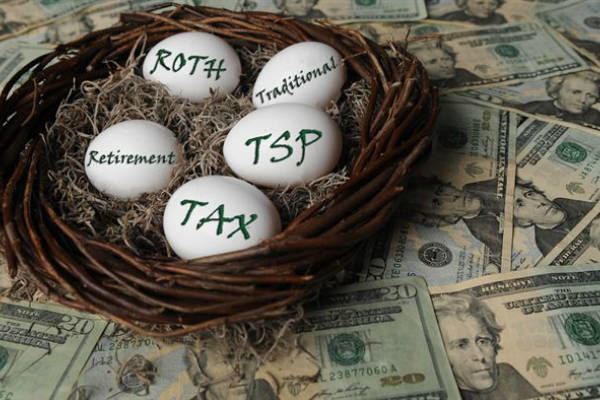I'm certain you and your significant other have faced the question "Where should we eat tonight?" Yes, it seems like a simple question, but at our house it can lead to an endless back-and-forth deliberation. And that's a situation in which there are numerous options from which to select.
When it comes to saving for retirement, "Should I use a Roth IRA or the Roth TSP?" is a common question I'm asked. And while the immediate ramifications may not be as tangible as what's for dinner, the long-term implications are huge.
Here, I'll look at 10 key factors or considerations that may play into your own decision as you craft your retirement savings strategy.
1. The Roth TSP rules on the expense front. It's hard for an IRA to compete when it comes to operating expenses. The average expense ratio with the Thrift Savings Plan is .033 percent. That equates to 33 cents on every $1,000 invested.
On the other hand, what you pay with an IRA will depend on where you invest, but likely, it will be more and, maybe, much more. According to the Investment Company Institute, the industry wide expense ratios for index funds and exchange traded funds in the top quarter (those with the lowest expense ratios) of funds can be 6 times higher than the TSP and the bottom half (more expensive funds) are at least 14 times more expensive. That's money out of your pocket and if you look at actively managed options, the numbers may favor the TSP even more.
2. Access favors the Roth IRA. You can withdraw contributions to a Roth IRA at any time without any income taxes or penalties. That's not an option available through the TSP.
3. Loans available through the TSP. Speaking of access, the TSP does allow loans. Taking one is not necessarily a good idea, but it is an option not available with a Roth IRA.
4. Investment choices Roth IRA. Currently, the TSP offers a limited selection of investments. Don't get me wrong, they are broad based and, in the case of the G Fund, unique. However, if you're looking to invest in real estate, commodities, emerging markets or other more "niche" areas, the TSP doesn't give you the options that a Roth IRA does. By 2021, the TSP plans to make a "mutual fund window" available that should allow participants a wider selection of investments.
5. Either can be automated. Pay yourself first -- this is a concept that works. Since contributions to the TSP are made via payroll deduction, that is, by definition, "first." Of course, you can set up an allotment or an automatic investment to fund your Roth IRA and get similar results. What I do like about the TSP is the option to set up your contributions as a percentage of your pay rather than as a flat dollar amount. Over time, with pay raises and promotions you'll be saving more, even if you don't increase that percentage (which I hope you will!).
6. Both Roth options offer retirement flexibility. Access to a tax-free stream of income in retirement is something good that both the Roth TSP and Roth IRA offer.
When implemented, The TSP Modernization Act of 2017 will give retirees with TSP accounts more options than they currently have when accessing their money. The new law will eliminate the one-partial withdrawal over a lifetime limit and allow withdrawals to be made from only Roth money within the account. These changes will level the "flexibility playing field" between the Roth TSP and Roth IRA. One difference will remain: Roth IRAs are not subject to Required Minimum Distributions like the Roth TSP at 70 years and six months.
7. Both should be top of mind during deployment. Roth, whether it's TSP or IRA, can be a great way to save for retirement while you're in a tax-free combat zone. Roth contributions with tax-exempt combat pay offer the potential to build a pot of retirement money upon which you will never pay taxes.
8. Roth TSP available to all. Anyone who is currently serving can sign up and contribute to the Roth TSP. There are no income limits. In 2018, single taxpayers with income above $135,000 cannot contribute to a Roth IRA ($199,000 for joint filers).
9. The TSP allows you to pile on. In 2018, the maximum you can contribute to the Roth TSP is $18,500. If you're 50 or older, there's an extra additional $6,000 "catch-up" contribution. For a Roth IRA, the max is a relatively paltry $5,500, plus an extra $1,000 for those 50 or over.
10. The TSP may offer free money. Those covered by the new Blended Retirement system that contribute five percent of their own money can garner a total of five percent in government contributions to their TSP account. That's a sweet deal you don't want to miss out on.
In whatever form or fashion, putting away money for retirement will help create flexibility and options for you, perhaps adding a few more upscale options to your retirement "where should we eat?" dilemma down the road. The most important decision may not be which of the two makes more sense, but rather your decision to save.
Get The Latest Financial Tips
Whether you're trying to balance your budget, build up your credit, select a good life insurance program, or are gearing up for a home purchase, Military.com has you covered. Sign up for a free membership and get the latest military benefit updates and tips delivered straight to your inbox.







